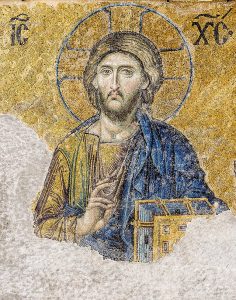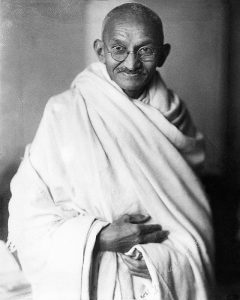1 Chapter 1: Introduction to the study of Religion
Introduction
Religious beliefs and practices have profoundly influenced every aspect of human society, from the smallest tribal communities to the most powerful political institutions. Across the globe, religious ideas have shaped the way people think, live, and govern themselves, leaving an indelible mark on human history. This chapter provides a comprehensive overview of the world’s major religions, examining their contributions to human thought and literature, as well as their geographical distribution and key practices.
By exploring the seven major world religions, this chapter delves into the core components of each faith, including their sacred texts, revered leaders, sacred spaces, and significant rituals and festivals. By examining these four key variables, we gain a deeper understanding of the beliefs, values, and practices that define each religion. Finally, the chapter concludes with a thoughtful discussion of the ethical principles that underlie each religion, highlighting the shared values and common humanity that unite us all.
Questions to Consider as you read this Chapter
-
What are some common characteristics or elements that are shared among the world’s major religions?
-
How do the world’s major religions differ in their beliefs and practices, and what are some examples of these differences?
-
What role do sacred texts play in the world’s major religions, and how are they used in religious practice?
-
How do the world’s major religions view the concept of God or a higher power, and what are some examples of these different views?
-
What is the significance of understanding and respecting the diversity of world religions in today’s global society?
Religious Faith Worldwide
Every religion has a specific place and time of origin. From this local origin, each religion spread to broader geographic areas throughout history. The most widespread religion in the world is Christianity, which was founded in Israel and now is practiced on every continent with approximately 2.1 billion followers worldwide. Islam, founded in Saudi Arabia, is the primary religion practiced in the Middle East and Africa, and its 1.5 billion followers may be found all over the world. Judaism was founded in Israel and is practiced worldwide. The Jewish religion has an estimated 14 million followers throughout the world.
Hinduism has not spread throughout the world to the extent of Christianity or Islam and is found primarily in India, where it was founded. India is a massive country and home to an estimated 900 million Hindus. Buddhism has its origins in India, but it spread rapidly to the entire Asian continent. Today, Buddhism can be found throughout China and most of the smaller Asian nations. An estimated 376 million Buddhists are located throughout the world. Roughly 294 million people practice traditional Chinese religions, which include Daoism and Confucianism. Only 16% of the world’s population is estimated to have no religious affiliation, which helps explain the importance of religious ideas for history, government, business, and all other areas of life. The following map shows the distribution of major religions worldwide:

Explore Further
Learn more about the religions practiced in the world today by watching:
- Crash Course Religions: How many religions are there?
Literary and Intellectual Contributions of Religion
One cannot understand the history of humanity without appreciating the role of religion in the formation of civilization. Most of the systems of ethics, law, and government practiced in the world today have their origins in religion. Many influential men and women who have lived have been deeply religious people, and their religious convictions have aided, to a lesser or greater extent, their contributions to civilization.
Jews, for example, were among the first people to provide extensive, detailed, codified laws for the governance of a society. For many generations, Jews governed themselves according to the law of Moses without a king or a standing army. Many prominent scientists, such as Roger Bacon and Nicholas Copernicus were professing Christians. Muslim scholars in Cairo, Egypt, founded the first modern university. This endeavor aided in the development of modern mathematics. Hindu scholars also contributed advanced knowledge of mathematics; the decimal system originated in India. Hindus in India also pioneered farming methods, such as irrigation. Buddhism was the first missionary religion. Buddhist monks were the first religious missionaries to travel throughout the world with the purpose of spreading their religion. Buddhism, Confucianism, and Daoism have been the most important intellectual systems shaping Asian culture, which includes a significant portion of the world’s population. One cannot separate the development of contemporary culture, both in the East and in the West, from the influence of religious ideas and religious leaders.
What Is Sacred?
The word sacred literally means “holy” or “set apart.” Every religion teaches that certain things have a unique religious value, and that certain books, people, places, or times are set apart from the rest of the world in order to bring people closer to God or to fulfill people’s religious obligations. This overview puts each religion into context and offers a broad comparison that should be helpful throughout the rest of this course.
Sacred Texts
Every religion covered in this course is based on the writings of a sacred text or holy book. These scriptures provide guidance for religious belief and practice, law and government, and daily living. Most religions believe that their holy books are divine in origin. Judaism, Christianity, and Islam, for example, teach that their respective holy books are the actual words of God spoken to humanity. Other religions, such as Confucianism and Buddhism, believe that their writings are significant and holy but not of divine origin. One common factor among the various religions regarding their holy books is the idea of interpretation. Although the scriptures are sacred and may be of divine origin, they still require followers to interpret the writings and apply the principles correctly. The art and science of interpretation is called hermeneutics.
Of all the religions covered in this course, Judaism is among the most ancient. Judaism has developed a detailed religious tradition. In Judaism, the sacred text is the Torah. The Torah is composed of the first five books of the Old Testament in the Christian Bible. These five books also are known as the Pentateuch, which literally means “five books.” The five books talk about God’s creation of humanity and the lives of Abraham, Isaac, and Jacob, the Jewish patriarchs. The books also tell of Israel’s enslavement in Egypt and Moses’ subsequent liberation of the Israeli people. Finally, the books provide detailed regulations for how the Jewish people were expected to live and govern themselves in the Promised Land. Some Jews also recognize other sacred texts, but these works usually are not seen as equal to the Torah. These supplemental books include other Old Testament books (e.g., psalms and prophetic books) and the Midrash, a collection of writings that interpret and explain the Torah.

The holy book of Christianity is the Bible. The Bible consists of 39 books in the Old Testament and 27 books in the New Testament. Some Christians, such as Roman Catholics, also recognize the Apocrypha, a collection of books written between the time of the Old Testament and the New Testament that have questionable origins. Most Christians who recognize these apocryphal books believe that they are not as authoritative as the Old and New testaments.
Islam’s sacred book is the Qur’an, or Koran. The Qur’an is a collection of the teachings of the prophet Muhammad. During Muhammad’s life, and shortly after his death in 632 C.E., his followers put into writing what they remembered of his sayings, sermons, and teachings. Their recollections were compiled into the Qur’an after Muhammad’s death. Many Muslims believe that the Qur’an must be written in Arabic and that translations into other languages are not the true Qur’an because those languages do not represent the actual words of Muhammad. Nevertheless, the Qur’an has been widely translated and is available in most languages today. Muslims also recognize the Hadith as a holy book, secondary to the Qur’an. The Hadith is a collection of stories about Muhammad’s life and interpretations of the Qur’an.

Hinduism is among the world’s oldest and most complex religions. Several sacred texts are associated with Hinduism, including the Vedas, the Upanishads, and the Bhagavad Gita. The Vedas are the oldest Hindu texts and are the source of the Hindu worldview. Other texts are viewed as commentaries on the Vedas, even when the works contain new religious ideas. Disagreement exists about when the Vedas were composed, although it may be as early as 2000 B.C. As with most ancient religious texts, the Vedas were passed down orally for many generations before they were transferred to a written form; therefore, it is difficult to know with certainty when they were composed. The Upanishads are a distinct set of texts within the Vedas that emphasize the superiority of Brahman, the great god of Hinduism. According to the Upanishads, all other deities are an expression of Brahman, but Brahman alone is the ultimate reality. The Bhagavad Gita is an epic poem (similar in some ways to Homer’s Odyssey) that tells the story of Arjuna, a young warrior who participates in a great and glorious battle.
Buddhism is an offshoot of Hinduism. Siddhartha Gautama, who was later given the title of Buddha, or “enlightened one,” was a Hindu who never intended to start a new religion; however, like Martin Luther within the Roman Catholic Church, Gautama wanted to reform Hinduism. Gautama rejected some key Hindu beliefs, such as animal sacrifices and the authority of the Vedas. As people began to follow his teachings, a new religion emerged. There is no universally agreed upon sacred text of Buddhism, but many collections of Gautama’s teachings exist. In addition, Buddhists seek personal enlightenment rather than absolute truth, which reduces the need for a single, authoritative text.
Confucianism often is considered more a way of life than a religion per se. Rather than placing an emphasis on a god or gods, Confucianism emphasizes practical wisdom and righteousness in daily life. The sacred text of Confucianism is a collection of the sayings of Confucius, a Chinese scholar who lived in Shandong Province approximately 500 years before the birth of Christ. Confucius’ followers put the leader’s words into writing during his life and after his death. These writings were widely circulated. The Analects, or sayings, of Confucius were the canon of classical education in China, and a scholar was not considered to be well educated without a proper knowledge of Confucius.
Daoism is a Chinese religion often practiced alongside Confucianism. Lao-tzu was a Chinese scholar who lived about the same time as Confucius. His writings, collected into a book called the Dao De Jing, or “way of virtue,” form the sacred scripture of Daoism. The Dao De Jing (sometimes spelling Tao Te Ching) may be considered the religious counterpart of the Analects of Confucius. Where the Analects are earthy and practical, the Dao De Jing is spiritual and mysterious.
Explore Further
Learn more about sacred texts and how they are interpreted by religions communities by watching:
- Crash Course Religions: How do religious texts work?
Sacred Persons
Judaism recognizes several sacred persons of two types: persons who are sacred because of the specific office or function (e.g., priests) and individuals who are seen as sacred because of their unique relationship with God. These individuals include Abraham, Moses, Elijah, and other notable figures in the Old Testament. Israel was divided into 12 tribes. Of these 12, the tribe of Levi was assigned to serve as priests to the rest of Israel. The Levites, therefore, were seen as sacred persons, particularly when executing the duties of a priest.
Christians also recognize several types of sacred persons. As with Judaism, many important biblical characters are seen as holy men and women. Depending on one’s theological orientation, a Christian may view certain church officers, such as the Pope, priests, bishops, and pastors, as holy people. Many saints also receive varying degrees of veneration. The Roman Catholic Church has a specific process for attaining sainthood and assigns certain days for the veneration of particular saints. Other Christians hold certain people in high regard as role models worthy of emulation, but they do not assign them a higher spiritual status than others. For all Christians, the most sacred person is Jesus Christ. Most Christians believe that Jesus Christ is God’s son and that he was born to a virgin, lived a perfect life, died, and was resurrected from the dead.

Islam, too, recognizes several classes of sacred persons. Foremost among them are the prophets, of which Muhammad is seen as the greatest and the culmination of the prophetic line. Other prophets include Jewish leaders, such as Abraham and Jesus Christ. Sacred persons in contemporary Islam include imams—the religious leaders of local mosques. Imams are the equivalent of a pastor or priest in Christianity. Their responsibility is to teach the Qur’an and to assist individuals in their religious duties. Other sacred persons are mullahs, or theologians. Mullahs are men trained in Islamic theology and law, who serve as guides to the Muslim community. A mullah may or may not also be an imam in a local mosque.
In Hinduism, the holy person is known as a sadhu (“holy man”) or sadhvi (“holy woman”). Becoming a sadhu or a sadhvi is the fourth and highest phase (the four phases are being a student, a father or mother, a pilgrim, then a sadhu or sadhvi) of a Hindu’s life. Few people adopt this rigorous ascetic lifestyle. Sadhus reject the comforts of life and focus on prayer, meditation, and service to the Hindu community.
In Buddhism, anyone may become a sacred person, as each person has the potential for enlightenment. However, certain individuals are viewed as teachers and guides; these individuals are known as lamas. Some are particularly well known, such as the Dalai Lama. Lamas serve as gurus, or guides and mentors, to devout practitioners of Buddhism known as yogi. Note that yogi may be found in both Hinduism and Buddhism, because yogi is a Sanskrit word. Because Hinduism and Buddhism share a common country and language of origin, terms and concepts overlap.

Confucianism recognizes Confucius as a founder and wise teacher, but he does not have the sacred status of the Buddha, or Christ, or Muhammad in their respective religions. Priests and saints are not recognized within Confucianism. Confucianism is more about practical living than about spirituality; therefore, Confucians do not venerate saints as some other religions do.
Unlike many other religions, Daoism does not place significant emphasis on sacred individuals or figures of worship. Instead, it encourages followers to lead quiet and peaceful lives, focusing on aligning themselves with the natural flow of the universe, often referred to as the Dao, or “the Way.” While Daoism values the teachings of figures like Lao Tzu (traditionally credited with writing the Dao De Jing), these individuals are not revered in the same manner as saints or prophets in other traditions. The emphasis in Daoism lies on personal harmony, simplicity, and living in accordance with nature rather than venerating heroes of the faith.
Sacred Places
Judaism recognizes a number of sacred places. During the time of the Old Testament, several places were seen as sacred, including altars that Abraham, Isaac, and Jacob built. During the time of Israel’s 40-year journey after its liberation from Egypt, the Israelis built a portable tent, called a Tabernacle, which was used as a sacred place for worship and sacrifice whenever the Israelis stopped to make camp. Later, Solomon, Zerubbabel, and Herod each built a temple in Jerusalem to serve as Israel’s sacred space. Herod’s temple was destroyed in 70 C.E. The site of the temple is said to be the place where Abraham was willing to offer Isaac as a sacrifice to God; it is now the site of the Dome of the Rock, one of Islam’s holiest sites.
Christianity recognizes several places as being more spiritually significant than others, but Christians generally do not recognize physical space as being sacred to the extent of some other religions. The holiest of places in Christianity are those places that are directly related to Christ, particularly in Jerusalem. Certain Christians may see Individual churches and cathedrals as sacred, but little universal agreement exists within Christianity about what constitutes a sacred place.
The most holy place in Islam is Mecca, in present-day Saudi Arabia. According to Islamic tradition, Mecca’s history can be traced back to Ishmael. Both Jewish and Islamic tradition recount that Abraham conceived a son, Ishmael, with his wife’s servant, Hagar. When Sarah, Abraham’s wife, conceived and gave birth to Isaac, she persuaded Abraham to send Hagar and Ishmael away to the wilderness. Jewish tradition does not attempt to explain what became of Ishmael but, according to Islamic tradition, he was the founder of the city of Mecca, which was later the birthplace of Muhammad. The Five Pillars of Islam are obligations that Muslims must fulfill. One of the pillars is a pilgrimage to Mecca at least once in a Muslim’s life, if he or she can afford to do so. Other Muslim holy sites can be found across the Middle East and Africa, but Mecca is the most significant.

Most Hindu holy sites are in India. The Ganges River is seen as holy, and Hindus regularly perform various bathing rituals in the river. Of the seven ancient holy towns in India, Varanasi, in the province of Uttar Pradesh, is seen as the most sacred Hindu site. This town and its temple attract millions of pilgrims each year.
The holiest site in Buddhism is Bodh Gaya, India. It was here that Gautama, sitting under a tree, received enlightenment. Other sacred sites include Lumbini, Gautama’s birthplace; Sarnath, where he preached his first sermon; and Kushinagar, where Buddha died.
In Confucianism, there is no notion of a sacred space that exists outside of the earthly realm. Instead, the focus is on the everyday interactions and relationships between individuals. In this sense, the ordinary spaces of daily life – our homes, communities, and public spaces – become imbued with a sense of sacredness. Confucianism elevates the mundane to the sacred, recognizing that it is in these everyday moments and interactions that we cultivate virtues, build character, and create a harmonious society. By extension, all of life becomes a sacred space, where we can practice compassion, empathy, and wisdom.
In Daoism, the emphasis on nature leads to a profound reverence for the world itself as a sacred entity. The natural world is seen as an embodiment of the Dao, the ultimate reality and source of all things. Within this sacred landscape, there are certain locations that hold a special significance and are considered particularly sacred – notably the Four Mountains. These majestic natural formations are believed to embody the essence of the Dao, making them extraordinary sites for spiritual practice, contemplation, and connection with the divine.

Sacred Time
Most religions observe sacred times during which special rituals, activities, or observances are held. These sacred times may be in memory of specific historical events, such as the date of a battle, a miracle, or the birth or death of a saint. These sacred times also may correspond to astrology or zodiac tables or to the life cycle of practitioners. Some sacred times are based on agricultural seasons.
Jews observe several sacred times. In the Old Testament, members of the Jewish religion marked seven annual feasts and several days of fasting (abstaining from food). These feasts were instituted to commemorate important events in the history of Israel, such as the deliverance of the Israeli people from Egypt (the feast of Passover) and Esther’s rescue of the Jewish people from Mordecai (the feast of Purim). The feast of Hanukkah was instituted to celebrate the victories of Judas Maccabeus against the Greeks in the 2nd century B.C. The most elemental sacred time in Judaism is the Sabbath, or Saturday. From the time of Moses, Jews have observed the Sabbath as a holy day for worship and rest.
The most familiar sacred time for Christians is Christmas, which celebrates the birth of Jesus Christ, and Easter, which is a remembrance of the resurrection of Jesus Christ from the dead. Many Christians recognize Holy Week, which traces the major events of the last week of Jesus Christ’s life and culminates on Easter. Sunday is the weekly holy day of Christianity, because it is the day that Jesus was resurrected. Sunday is traditionally set aside for worship and rest, similar to the Sabbath in Judaism.
Islam’s observances of holy times include a commemoration of the hijira, Muhammad’s migration with his followers to Medina in 622 C.E. which marks the first month of the Muslim calendar. Ramadan, the ninth month in the Muslim calendar, is familiar to many Westerners as a month of fasting and abstinence. During Ramadan, devout Muslims abstain from eating and drinking and from sexual relations between sun-up and sun-down. Year-round, mosques usually are open for prayer daily; however, Friday is reserved as a day of worship and prayer, similar to Sunday for Christians and the Sabbath for Jews.
Hinduism’s diverse pantheon of deities is celebrated through numerous holy days, each dedicated to a specific god or goddess. Amidst this rich tapestry of festivals, three major holy days stand out for their universal observance. Holi, the most popular Hindu festival, heralds the arrival of spring in February and March. Originally a fertility festival in honor of Lord Krishna, Holi has evolved into a vibrant celebration of color, joy, and new beginnings. Divali, the Hindu New Year, illuminates the month of November with a festival of lights. This sacred occasion pays tribute to two powerful goddesses: Kali and Lakshmi. As the legend goes, Lakshmi graces every home that welcomes her with a lit lamp, bestowing good fortune and prosperity. Dasehra, a nine-day celebration in October, commemorates the triumph of Goddess Durga over the buffalo demon. This festive period is marked by gift-giving, vibrant dancing, and merriment, as devotees come together to honor the divine feminine and the victory of good over evil.

Buddhism recognizes four primary holy days. A 3-day festival in April celebrates the Buddhist New Year. The Buddha’s birthday is celebrated on April 8 with parades, fireworks, and costumes. The Festival of Souls, also known as Ullambana, is a month-long holiday. The timing of the festival may vary. For example, in Japan, it is observed in July, but in China it occurs in August. During festival time, it is believed that purgatory is opened, and the souls of the dead are allowed to wander the earth. Buddhists leave gifts and food for these spirits, and priests perform various rituals to release the souls from purgatory. In November, some Buddhists celebrate the sending forth of the first Buddhist missionaries. During the Festival of Souls, lay people present new yellow robes to Buddhist monks. These robes are displayed on a large tree. The highlight of the festival occurs when the great robe is created. This robe is made in one day— from spinning the thread, to weaving the cloth, to sewing the garment.
China is a rich cultural melting pot, where Buddhism, Confucianism, Daoism, and other indigenous religions have blended harmoniously. As a result, the holy days of these religions often overlap, becoming an integral part of Chinese tradition rather than being specific to individual religions. The Chinese New Year, celebrated in late January or early February, marks the beginning of the lunisolar calendar and is a time of great joy and renewal. The festivities continue until the first full moon, filling the air with vibrant decorations, delicious food, and warm family reunions. In April, the Chinese honor their ancestors with a poignant festival, where they lovingly clean and decorate grave sites, sharing stories and memories of their loved ones. Families often enjoy a picnic together at the grave site, celebrating the life and legacy of their ancestors. June brings the summer solstice and the thrilling Dragon Boat Festival, where colorful boats race across the water, accompanied by drumbeats and cheers. Daoists believe that the summer solstice marks a moment of perfect balance between yin and yang, making it an ideal time to cast out evil spirits and welcome positive energies. The Chinese also observe a version of All Soul’s Day, known as Ullambana, where families pay tribute to their ancestors who have been released from purgatory. With offerings, feasts, and warm gatherings, they honor the memories of their loved ones and celebrate the cycle of life. Finally, Daoists in China welcome the winter solstice, embracing the shortest day of the year as a symbol of the universe’s renewal. As the days grow longer, they celebrate the return of light and life, filling their hearts with hope and gratitude.
Explore Further
Learn more about how religious communities commemorate sacred time and experience community through rituals by watching:
- Crash Course Religions: What does ritual have to do with religion?
Impact of World Religions on Ethics, Society, and Culture
The moral principles of each religion have profoundly shaped the societies they have influenced, instilling ethical values and guiding human behavior. While each religion has its unique moral code, there are significant similarities in their ethical reasoning. Most religions, for instance, condemn murder, theft, dishonesty, adultery, and other vices. However, nuances and variations exist within specific moral rules, such as the permissibility of killing in war, self-defense, or capital punishment.
- Judaism’s moral system, based on the Law of Moses and the Ten Commandments, emphasizes respect for life, marriage, honesty, and property rights.
- Christianity’s moral code, as preached by Jesus in the Sermon on the Mount, focuses on inner righteousness, honesty, and loving one’s neighbor.
- The synthesis of Jewish and Christian ethics has formed Judeo-Christian ethics, which has significantly influenced Western society, particularly in the United States.
- Islam’s moral code, based on submission to Allah, emphasizes obedience and moral accountability, with every action carrying moral significance. The Qur’an and the Sunnah, which chronicles Muhammad’s habits and practices, provide guidance for Muslims.
- Hinduism’s ethical system is rooted in reincarnation and karma, where moral actions determine one’s future incarnation.
- Buddhist ethics, based on enlightenment and the Noble Eightfold Path, emphasize right speech, action, and livelihood to attain moral character.
- Confucian and Daoist ethics are intertwined, with Confucianism providing a moral framework for Daoism. These systems emphasize proper relationships, honesty, and duty to family and country, with few moral absolutes. By exploring each religion’s moral principles, we can gain a deeper understanding of their impact on society and culture.
Impact of World Religions on Government and Law
The moral principles of each religion have had a powerful impact on the law and governance of their respective societies.
Judaism’s emphasis on justice, compassion, and human dignity has significantly influenced social justice movements and community development worldwide. Jewish values have shaped policies and advocacy efforts, particularly in the areas of human rights, education, and healthcare. In the United States, for example, Jewish organizations have played a crucial role in promoting civil rights, while in Israel, Jewish values have informed the country’s social welfare policies and community programs.
Christianity’s teachings on love, forgiveness, and equality have had a profound impact on social values and community development globally. Christian principles have influenced policies and social movements, particularly in the areas of poverty alleviation, education, and healthcare. In Europe, for example, Christian values have shaped social welfare policies and community programs, while in Africa, Christian organizations have played a key role in promoting healthcare, education, and economic development.
Islamic religious laws have given rise to a system of civil law known as Sharia. Sharia law, in various permutations and interpretations, has had a primary influence on the laws of every Muslim nation in the Middle East and Africa. Sharia law holds that both nations and individuals must submit to the will of God. This has led to the development of a robust legal framework that emphasizes justice, compassion, and fairness. Many Muslim-majority countries have successfully integrated Sharia law with modern legal principles, creating a unique and effective system of governance. Additionally, Sharia law has promoted social welfare, education, and human rights, contributing to the overall well-being of Muslim communities worldwide.
The Hindu principle of nonviolence had a tremendous impact on law and government, not only in India, but also in South Africa and the United States. Mohandas Gandhi was a leader in the Indian independence movement and pioneered the use of nonviolent civil disobedience to unjust laws. He was the primary inspiration for the Rev. Martin Luther King, Jr. in his leadership of the civil rights movement in the United States through the use of marches, sit-ins, and other nonviolent protests. Nelson Mandela also claimed that he received his inspiration for opposing Apartheid (the system of racial segregation in South Africa) from Gandhi.

Buddhism has profoundly shaped the politics and social values of various nations, particularly in Asia. In countries like Sri Lanka, Thailand, and Bhutan, Buddhism has influenced the development of democratic principles, emphasizing compassion, tolerance, and non-violence. The Buddhist concept of “dharma” (righteous living) has guided leaders in making decisions that promote the well-being of all citizens. Furthermore, Buddhist principles have fostered a sense of community and social responsibility, inspiring initiatives like microfinance programs and environmental conservation efforts.
Shintoism has played a significant role in shaping Japan’s politics, social values, and community. As the indigenous faith of Japan, Shintoism has influenced the country’s imperial system, with the emperor historically serving as the highest Shinto priest. Shinto values like “makoto” (sincerity) and “kokoro” (heart/mind) have promoted a culture of respect, loyalty, and hard work. Additionally, Shinto’s emphasis on ritual purity and community harmony has contributed to Japan’s strong social cohesion and group-oriented culture.
Indigenous religions, such as Yoruba, have significantly impacted the social values and community dynamics of their respective cultures. In Yoruba tradition, the concept of “ubuntu” (humanity towards others) emphasizes the importance of community, mutual respect, and cooperation. Yoruba religious practices, like the Ifá divination system, have fostered a sense of shared responsibility and collective decision-making. Furthermore, Yoruba values like “iwa” (character) and “omorere” (respect for elders) have promoted a culture of respect, discipline, and social harmony.
Chapter Review
To learn more and review the key concepts presented in this chapter, watch:
- Crash Course Religions: What even IS a religion?
- Religion for Breakfast: 3 things everyone should know about religion.
Glossary
Analects: The sayings of Confucius collected in book form.
Apocrypha: A collection of books that some Christians consider a supplementary religious text to the Bible.
Bhagavad Gita: One of three Hindu sacred texts, this one comprising an epic poem.
Buddha: The title of Siddhartha Gautama, the founder of Buddhism; literally means “enlightened one.”
Decalogue: The Ten Commandments of Moses.
Hermeneutics: The process of interpreting a text, particularly a religious text.
Noble Eightfold Path: The process of attaining enlightenment, according to Buddhism.
Qur’an: The holy book of Islam containing the teachings of Muhammad.
Sacred: An object or concept that has unique religious value; literally means “holy” or “set apart.”
Sharia: Islamic civil and religious law.
Tao te Ching (also spelled Dao De Ching): The sacred book of Daoism, comprised of the sayings of Lao-tzu; literally means “way of virtue.”
Torah: The first five books of the Old Testament; the sacred text of Judaism.
Upanishads: One of three Hindu sacred texts.
Vedas: The most fundamental Hindu sacred text; often accompanies the Upandishads and the Bhagavad Gita.
